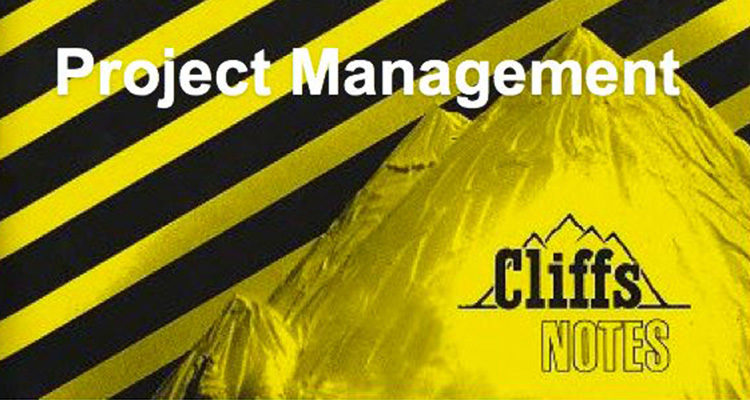
Every day I speak with people who are learning how to manage projects but not typical project managers that are PMP certified and belong to a traditional PMO. These are unique individuals that are finding themselves in this role by default – scientists, auditors, or engineers, who choose to take on the challenge of managing projects, simply because it needs to be done, even with very little or no background or experience. Some are forced into it, others choose to expand their skillset; but both learn quickly that it is hard work and can be more than they bargained for. If you are finding yourself running a project as one of these non-project managers, here are the cliffs notes to getting started, from a seasoned veteran of the business.
1) Scope – Make it crystal clear
Once you receive details on what the new project will be, make sure you are completely clear on what the scope is – the expected outcome, and communication plan. Meet with your stakeholders, sponsors, or internal customers to get a solid understanding. If they are too busy to meet with you, you might question how important this work is after all.
You don’t need to use a formal project charter or proposal, but always document what was agreed upon. This could be as simple as sending an email after your meeting to state what was discussed and give them a chance to correct any misunderstandings. This will serve as your project scope and should be understood by all parties involved. Any time this changes, such as you are requested to add in more deliverables, make sure that all parties agree to the changes to the initial agreement (even if there is only one other party).
2) It’s a two way street
While it’s important to make sure you are getting the information and guidance you need to be successful, it’s equally important that you are giving your supporters and management what they need: frequent and regular updates. One way to do this is by creating a report with information like key accomplishments of the week, next steps, upcoming milestones, and risks/issues to be aware of. Another way is a brief weekly email update to those who have interest in your project.
You might ask why bother with an update when nothing has changed? Even a PMP-less project manager needs to give updates consistently in order to maintain the line of communication and keep the project moving forward, and let’s face it, forces you to put some thought into where the project is and what the next steps are.
3) Delegate to deliver
If you are the subject matter expert, it’s tempting to just do the work yourself in addition to managing it. After all, you are the one who can do it best and fastest, so what’s the problem? In reality, this approach will create several issues for you that are easily avoidable by delegating work. By sharing the workload with a team, you create a sense of community; everyone working towards the same goal. Additionally, when more people do the work, it gets done faster and more completely. Sharing the workload means your time is freed up to make sure your customer is happy and help the team remove roadblocks as they come up.
4) Make time for the details
Managing this project is probably not your only job, so it’s easy to lose track of minor things and call it “good enough” when you have other things to work on. While you may be focused on meeting deadlines for deliverables and staying within budget, it’s also key to keep an eye on the details that come up in day to day work. Take time to evenly divide your attention on the end goal and the smaller components, such as checking in regularly with the team, making sure they have what they need to be successful, and of course sending those pesky status reports out. If details are not your strength, create a checklist to ensure you don’t miss anything.
5) Do a proper close out
As the project winds down, don’t just walk away! Immediately after your customer has accepted your work is the best time to debrief with the team. What worked well? What would they like to see done differently next time? These are also questions to have with your customer, especially if you will be working with them again in the future. Did your communication style and frequency give them what they needed?
Amid the team feedback disbanding, celebrate the good work! Bringing in coffee and donuts for an office party or sending an email to each team member’s boss citing their good work are both simple but meaningful ways to say thank you to the team for their contribution.
There is an art to project management and like anything, it gets easier with practice. If it takes you a few tries to get it right, that’s normal so don’t be too hard on yourself. You’ll have to find your methods of what works for you and the team, but keep in mind that it’s a marathon, not a sprint. Even when you get to the point of successfully leading a project from start to finish, there is always room to grow. This doesn’t mean moving in to a traditional project manager positions and becoming PMP certified, but more as a growth opportunity for your career development. The most victorious project managers are those that communicate the good and bad, inspire team members, and most importantly, consistently deliver on desired outcomes.


![The Value of Combining Robust PPM with Lightweight Work Execution [Video]](https://blog.planview.com/wp-content/uploads/2018/03/Combining-Robust-PPM-with-Lightweight-Work-Execution.gif)

